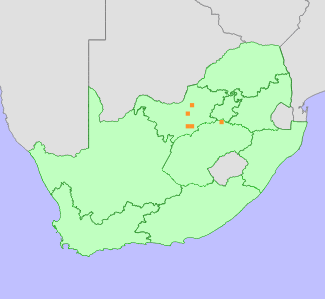Craib, C. 1993. Field studies and cultivation of some Brachystelma species in the eastern Cape, Natal, the eastern Free State (including Qua Qua), and the Transvaal. Excelsa 16:11-23.
Craib, C. and Batten, A. 1994. Brachystelma incanum. Flowering Plants of Africa 53:48-53 (t. 2090).
Dyer, R.A. 1976. Asclepiadaceae: new species of Brachystelma. Bothalia 12(1):53-57.
Dyer, R.A. 1980. Brachystelma, Ceropegia and Riocreuxia. In: O.A. Leistner (ed). Flora of Southern Africa 27 Part 4:1-88. Botanical Research Institute, Pretoria.
Dyer, R.A. 1983. Ceropegia, Brachystelma and Riocreuxia in southern Africa. A.A. Balkema, Rotterdam, Netherlands.
Hahn, N. 2013. Rare, endangered and endemic flora of the North West Province. Unpublished Report to the Department of Economic Development, Conservation and Tourism, North West Provincial Government.
Hilton-Taylor, C. 1996. Red data list of southern African plants. Strelitzia 4. South African National Botanical Institute, Pretoria.
Raimondo, D., von Staden, L., Foden, W., Victor, J.E., Helme, N.A., Turner, R.C., Kamundi, D.A. and Manyama, P.A. 2009. Red List of South African Plants. Strelitzia 25. South African National Biodiversity Institute, Pretoria.
Victor, J.E. 2002. South Africa. In: J.S. Golding (ed), Southern African plant Red Data Lists. Southern African Botanical Diversity Network Report 14 (pp. 93-120), SABONET, Pretoria.
|
 Comment on this assessment
Comment on this assessment


